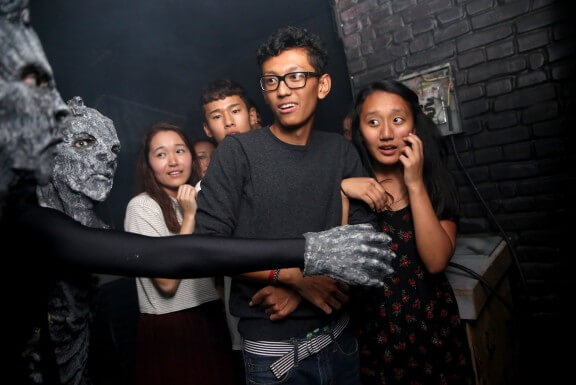 In professor Audrey J. Murrell’s class at the University of Pittsburgh, students may use their phones as part of classroom assignments.
In professor Audrey J. Murrell’s class at the University of Pittsburgh, students may use their phones as part of classroom assignments.
A new report conducted by Barney McCoy, associate professor of broadcasting at the University of Nebraska at Lincoln, shows more than 90 percent of surveyed students admit to using mobile devices in class for unrelated activities.
The results of the report, published recently by the Journal of Media Education, show that texting was the No. 1 activity for students on their phones in class, making educators create no-tech policies.
Dr. Aaron J. Moore, associate professor of journalism at Rider University, explains: “Texting took over the classroom to the point [that] if I continually had to keep asking students to stop texting, it would ruin the flow of class.” In fact, Moore previously had a no-device classroom rule until it became too much to police.
He’s at the point of thinking, “If you can’t beat ’em, join ’em” — with a caveat, that is: Moore incorporated the devices as part of his curriculum. “I teach public relations classes so we do a lot of tweeting. We use hashtags and find examples of those using social media in tactical and successful ways. Live tweeting is like a laboratory in action. Students can also ‘converse’ with professionals when tweeting in classes. They can also tweet their friends — but that is worth the risk.”
Audrey J. Murrell, associate dean and associate professor at the University of Pittsburgh’s College of Business Administration, agrees with Moore’s mindset.
Realizing mobile devices are here to stay, Murrell supports students using technology educationally. “A creative solution is to incorporate them into the classroom activities, thus giving [it] a purpose.”
Murrell believes that focus is a big part of using the devices. “It’s important to not simply take in the information, but to really understand what is being communicated in the classroom. This takes focus, and one’s focus is divided while texting,” she says. “Also, the impression you give to faculty and peers is part of your personal brand. Think about what it would mean to you if you were communicating something important and you saw the other person text.”
Though he incorporates tweeting in class, Moore‘s students tarnish their “personal brand” if they are caught texting. In his syllabus he includes a professional grade. “If you text during class, I will drop your grade because it is not professional,” he says. “It is disrespectful and annoying to talk to a class and have texting during it. Why would you antagonize the person who is responsible for giving you the grade?”
What were students doing on their phones?
Texting: 86 percent
Checking the time: 79 percent
Emailing: 68 percent
Social networking: 66 percent
Web surfing: 38 percent
Gaming: 8 percent
Source: The Journal ofMedia Education/Barney McCoy, University of Nebraska, Lincoln
Students weigh in:
“I don’t text in class because I find it way too distracting. My professors go through the lecture really quickly and reading or sending even one short message inhibits my ability to take everything in. My professor last year had an anti-phone and anti-computer policy. If she saw you using electronics during class, she’d mark you absent for the day, which would hurt your participation grade.”—Jillian Sandler,senior, Northwestern University
“In one of my classes, there was a kid blatantly texting in front of the professor. The professor reprimanded and embarrassed him in front of the class. Needless to say, that kid made sure that he was never on his phone again during that class.” — Rose M. Choi, senior, University of Pittsburgh

















